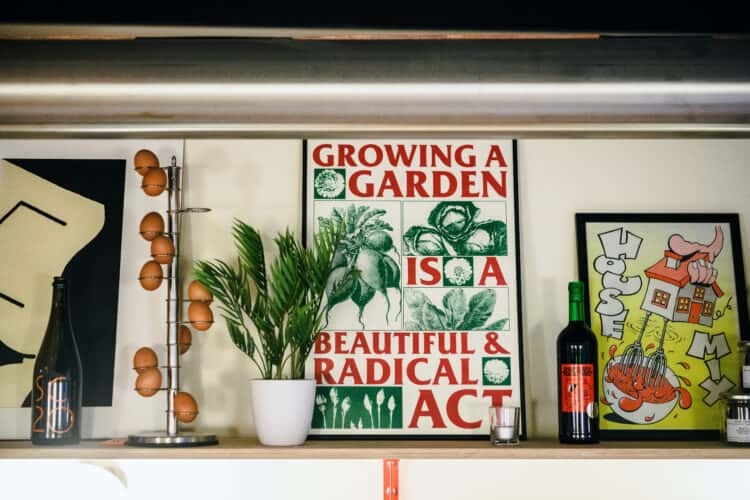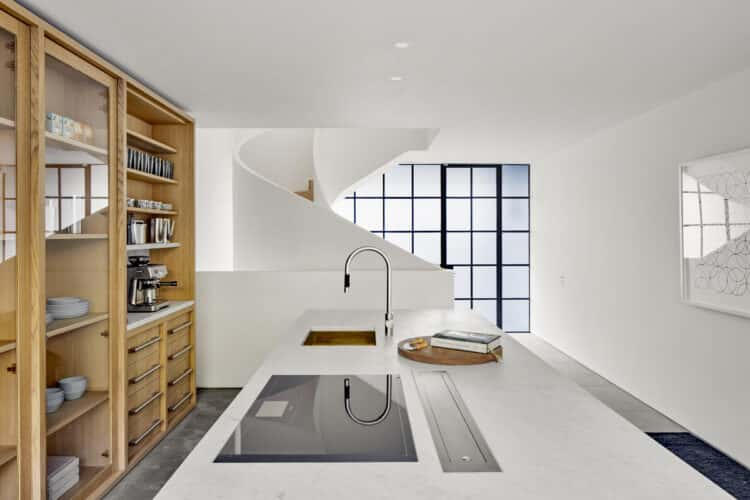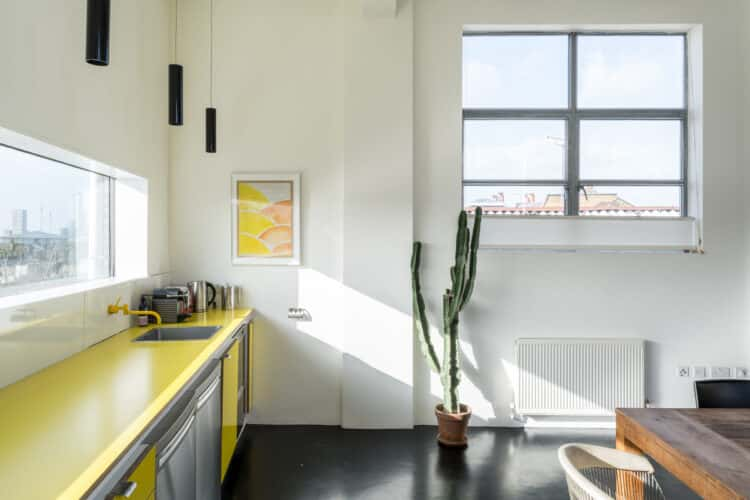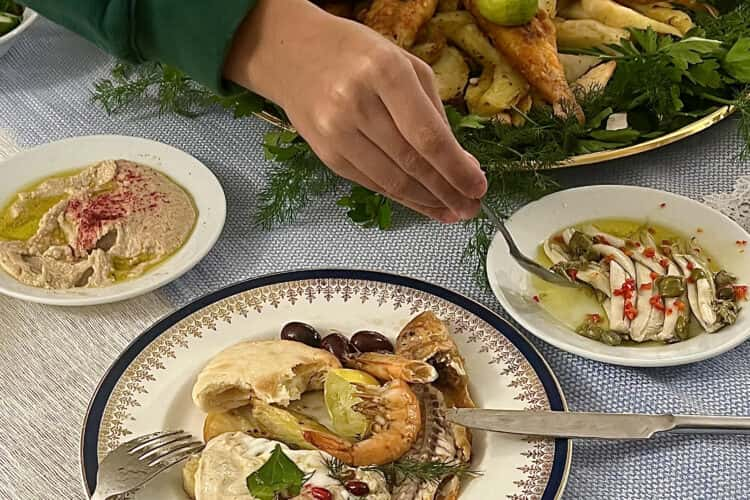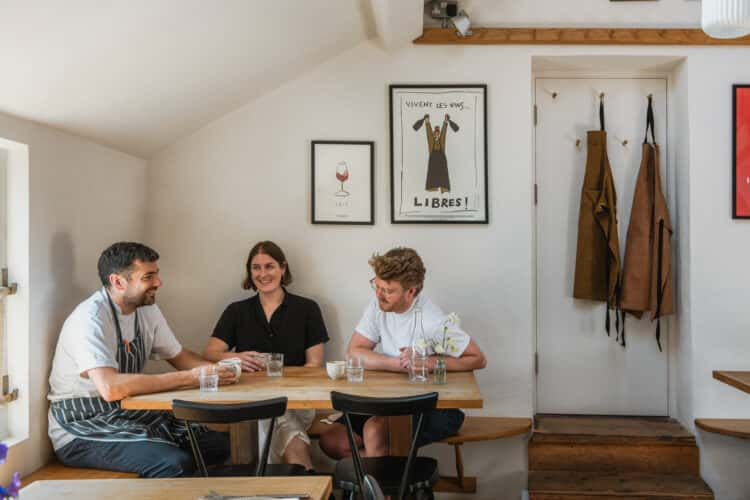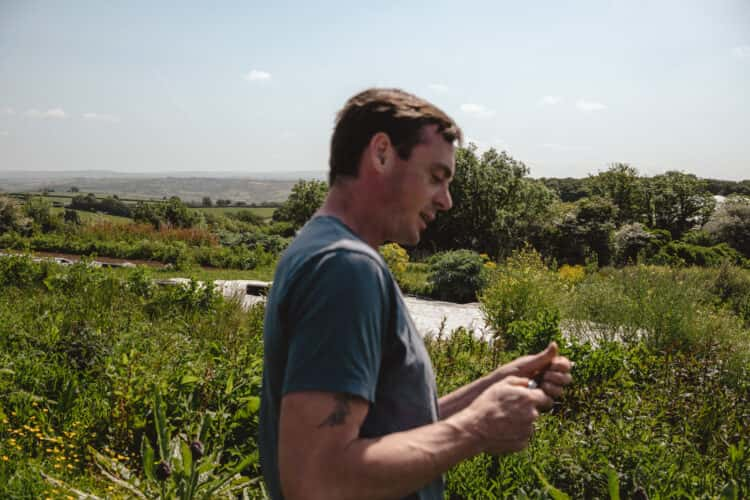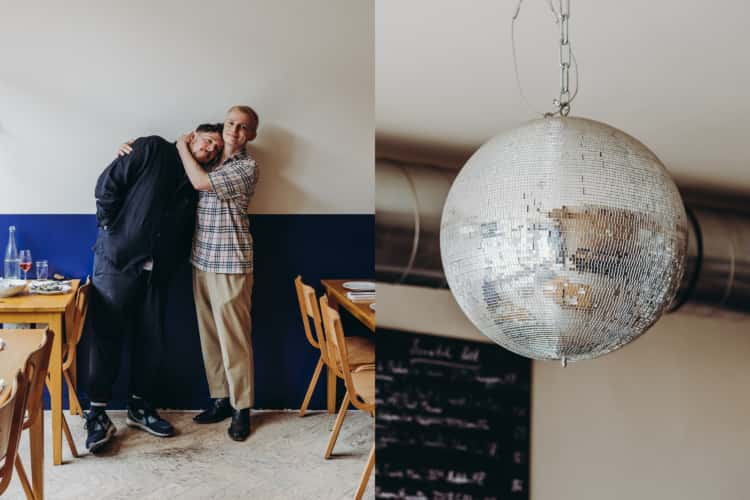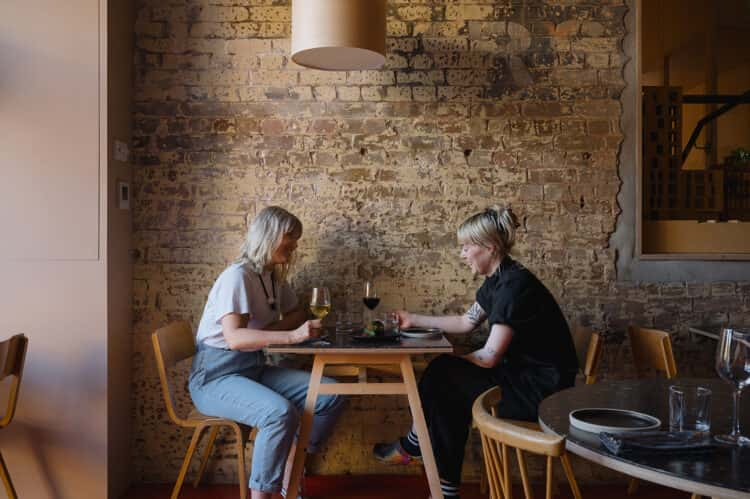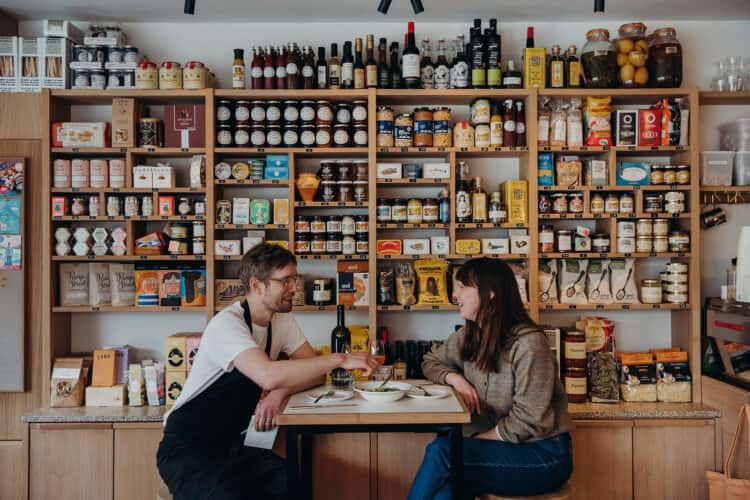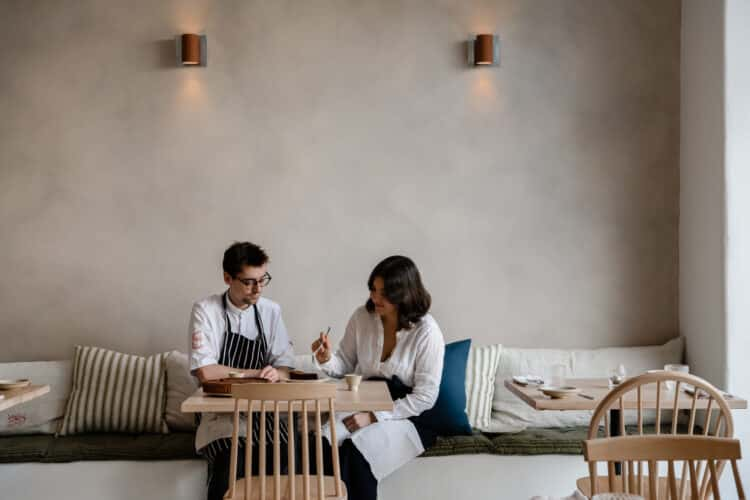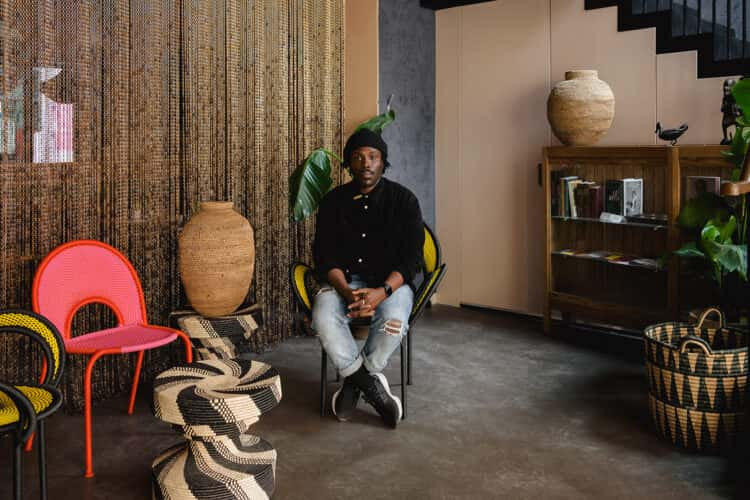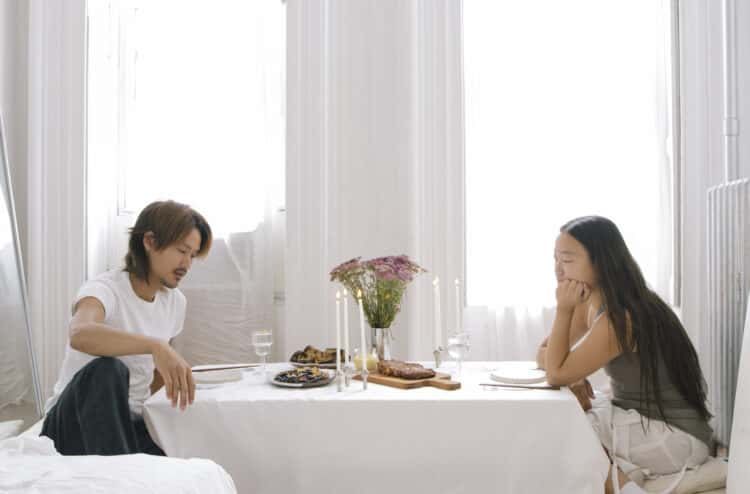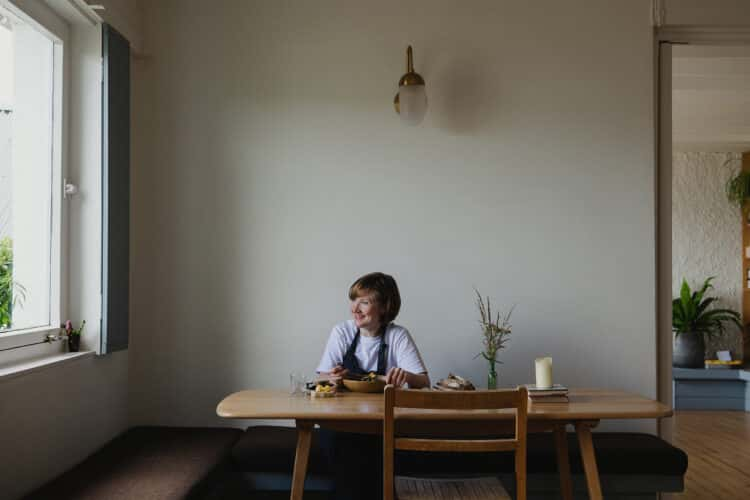How Brodie Meah and Max Venning built a brand about having fun with fine natural wine at Cave Cuvée in Bethnal Green, east London
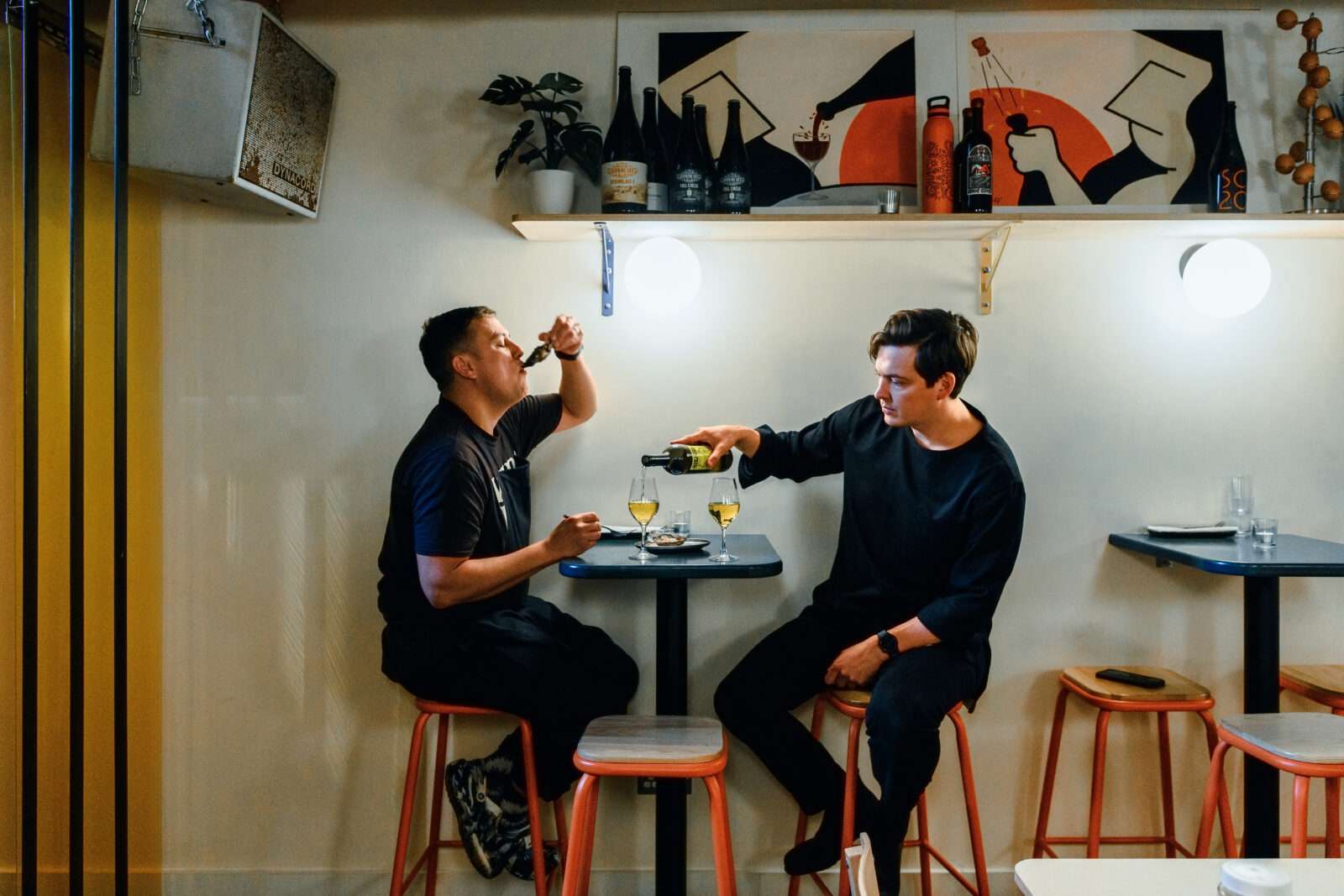
Cave Cuvée isn’t Brodie and Max’s first rodeo: it’s the sequel to Top Cuvée, the high-spirited neighbourhood restaurant in Highbury, north London. In three years, they’ve built an instantly recognisable brand – their fizzy orange palette and graffiti-inspired logos rival the designs of streetwear labels – and tapped a market of natural-wine loving Gen Zers and millennials. It was a smart move: the Cuvée universe exploded – even despite the pandemic – and along with the restaurant and wine bar, it now comprises two physical shops, an online store, merchandise, a natural-wine subscription service and even home delivery. Here, Brodie and Max tell us just how they did it, while whipping up a vermouth-based cocktail and a mignonette sauce to serve with oysters.
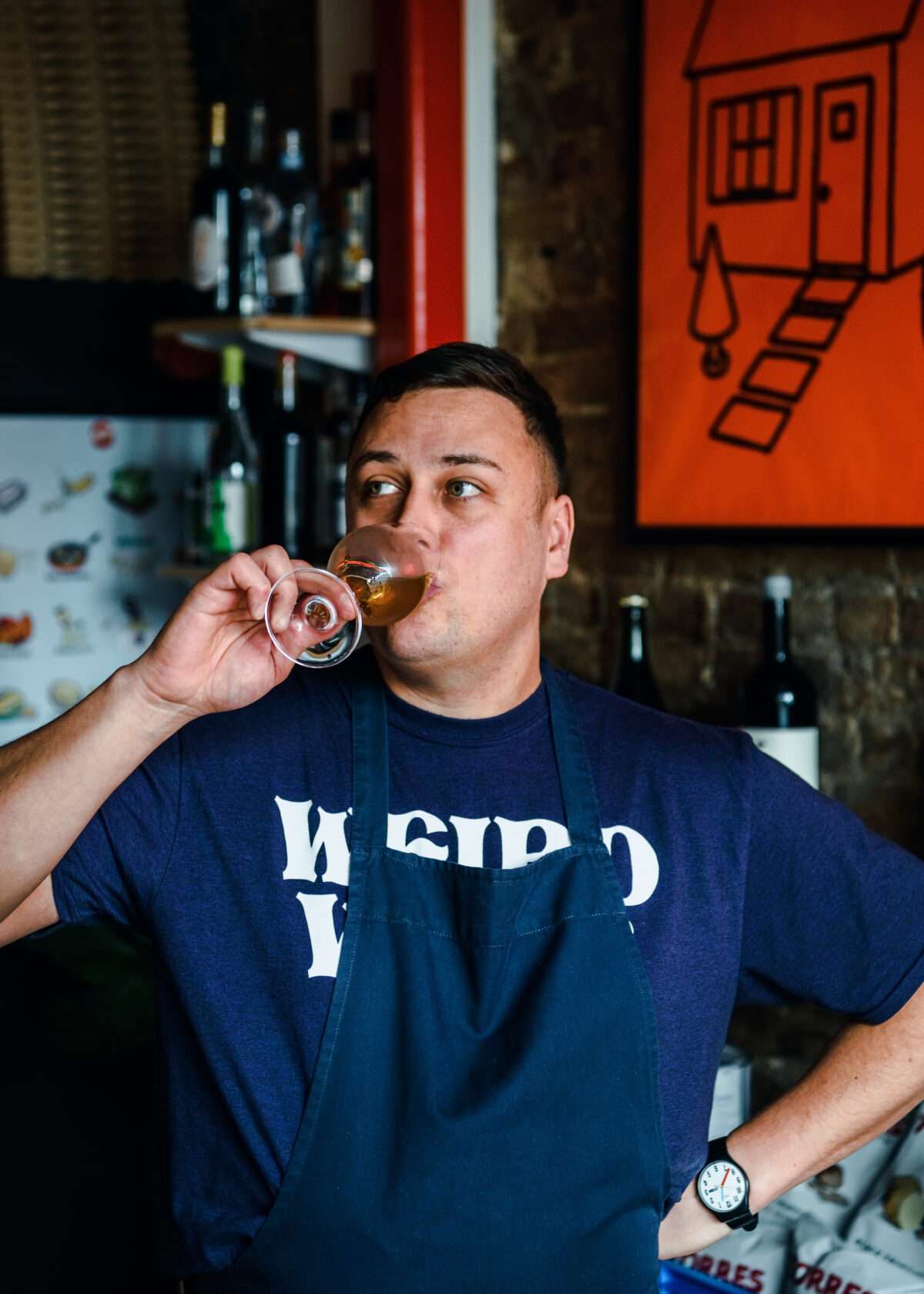
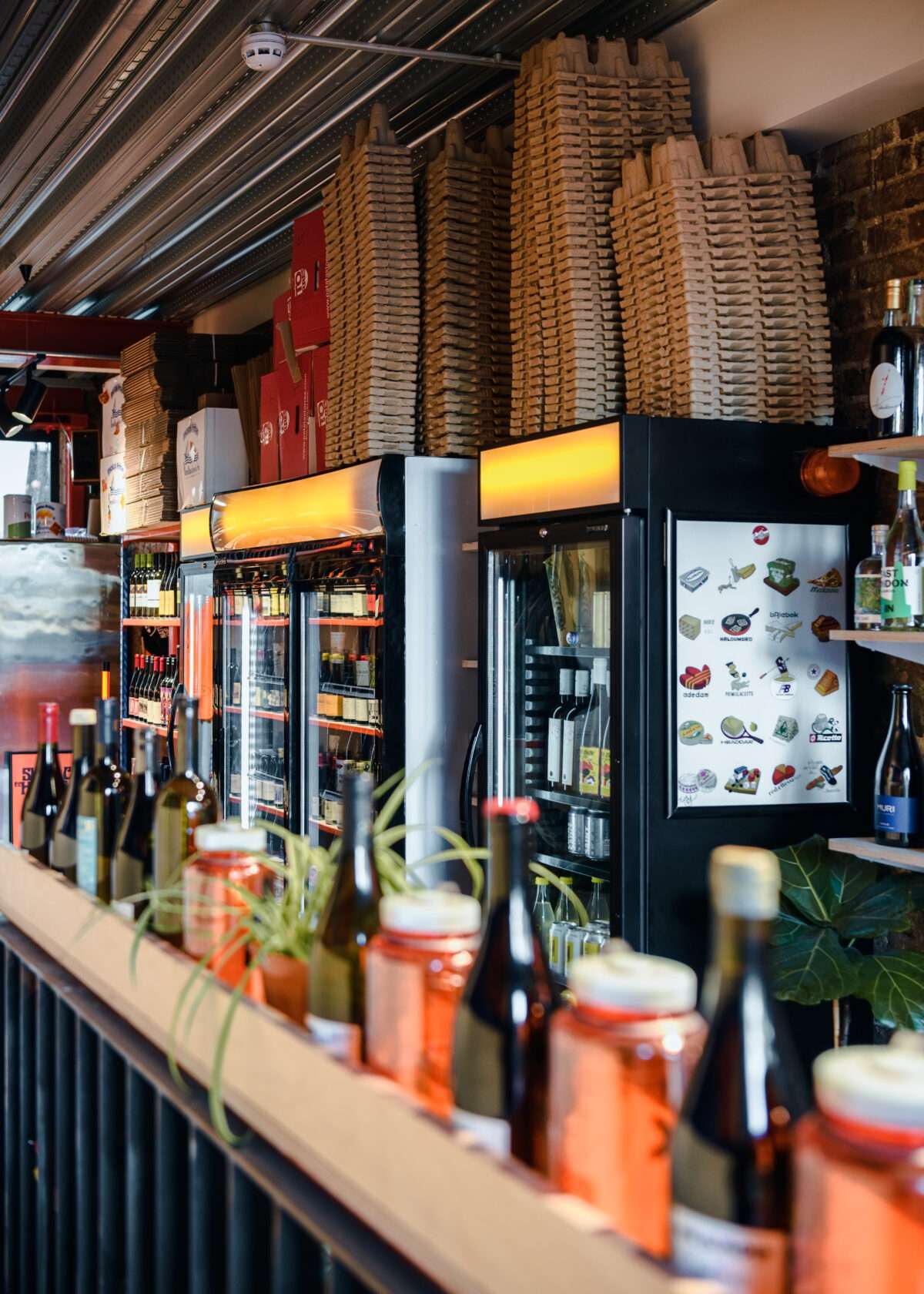
Max: “Come to Cave Cuvée for a glass of wine and a good time. On a Friday and Saturday night, there’s a real high energy here. We actually added an extra couple of tables in the basement to make it really buzzy. When it’s super busy, people will just stand upstairs in the shop with a glass of wine. We’ve always got fun tunes on and the team has a really good attitude.”
Brodie: “We’ll play anything from contemporary hip-hop to techno and dance music. At Top Cuvée, customers would complain that the music was too ‘pumping’. But at this space, we can go for it. You’re always welcome to just rock up. If you’re organised, you’ll book yourself a seat, but if you’re spontaneous, just come down…”
Max: “…You just might have to hold your plate! It’s funny, someone will be working behind the counter and end up with six people using it as a table, but it’s a good vibe. We don’t want a boring space. This is about having fun. It feels like a Parisian bar crammed with people.”
Brodie: “It has a bit of a house-party vibe to it. People lean on the walls and drink by the stairs. We’ve cracked the design: customers come into the shop and they think it’s pretty funky when they discover the bar downstairs.”

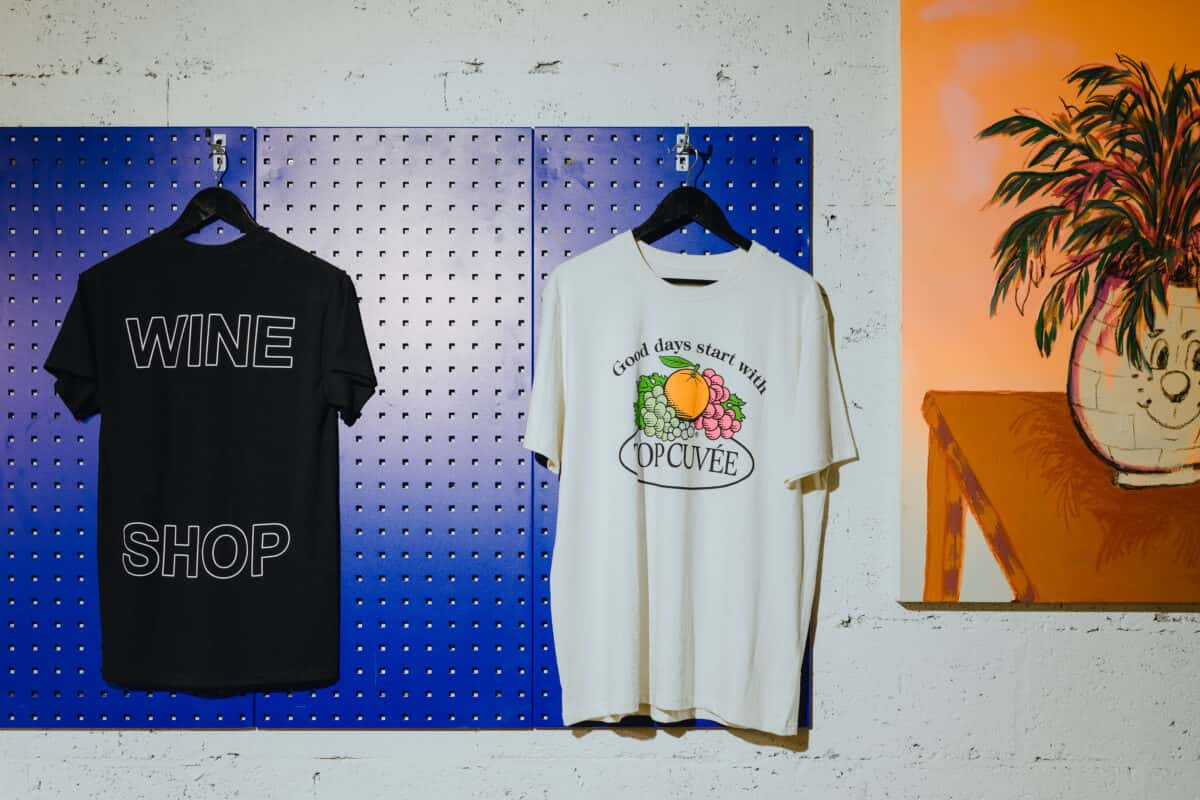
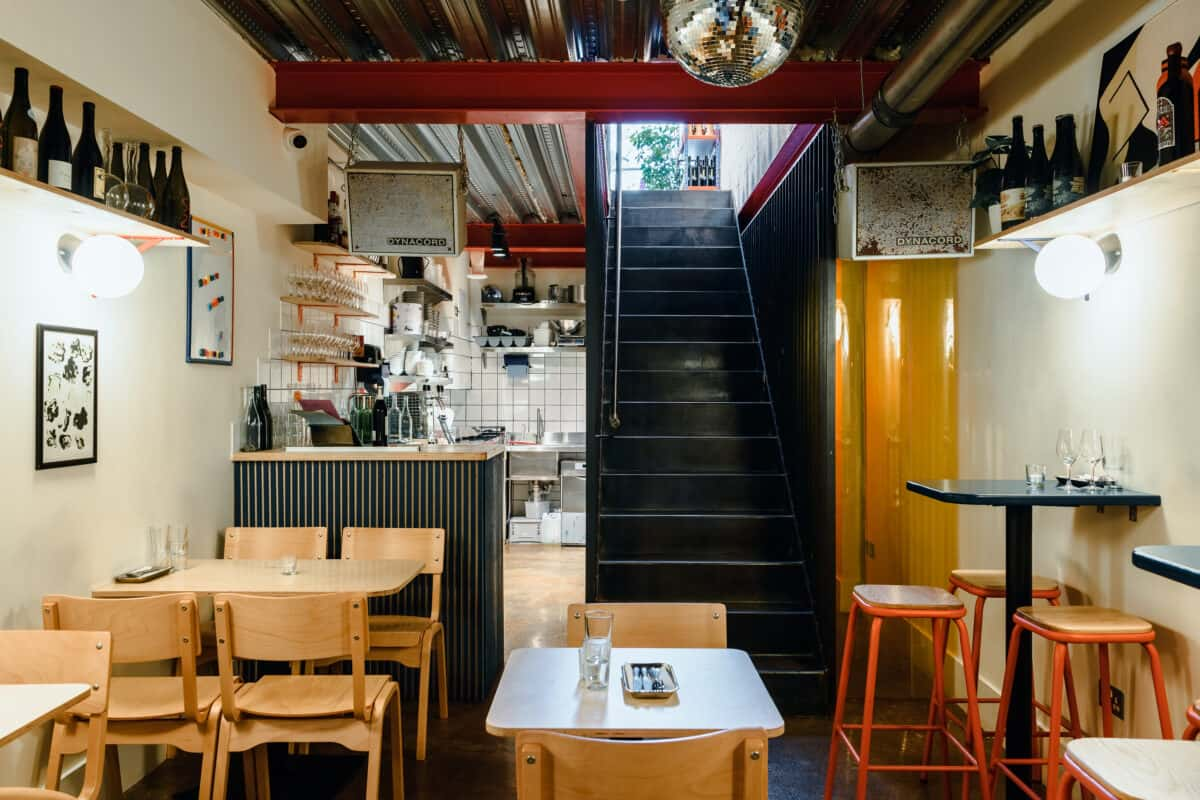
Max: “We were initially just looking for a shop with storage. We actually said to each other, ‘We’re not doing another service venue’. But then we saw the site and thought, ‘This is really cool.’ It’s a fantastic building with great visuals and a basement for a bar. So, we pushed forward.”
Brodie: “We designed the space to be multifunctional. The shop upstairs also serves as a warehouse for e-commerce distribution and stock. We thought about getting a warehouse at one point, but what will that add to the customer experience? Nothing.
“We had to think cleverly about the aesthetic. There’s lots of cardboard for packaging stacked around the shop, for instance, so that really played into the industrial design. We have the kind of shelving you get in warehouses, but then we’ve softened all that with natural materials. We did it all ourselves. It’s been a really organic process.”
Max: “First and foremost, the space has to be functional. There are a lot of elements to consider here: customers, storage, food preparation, shipping. We thought about all of that and it’s very much a space that we want to be in.”
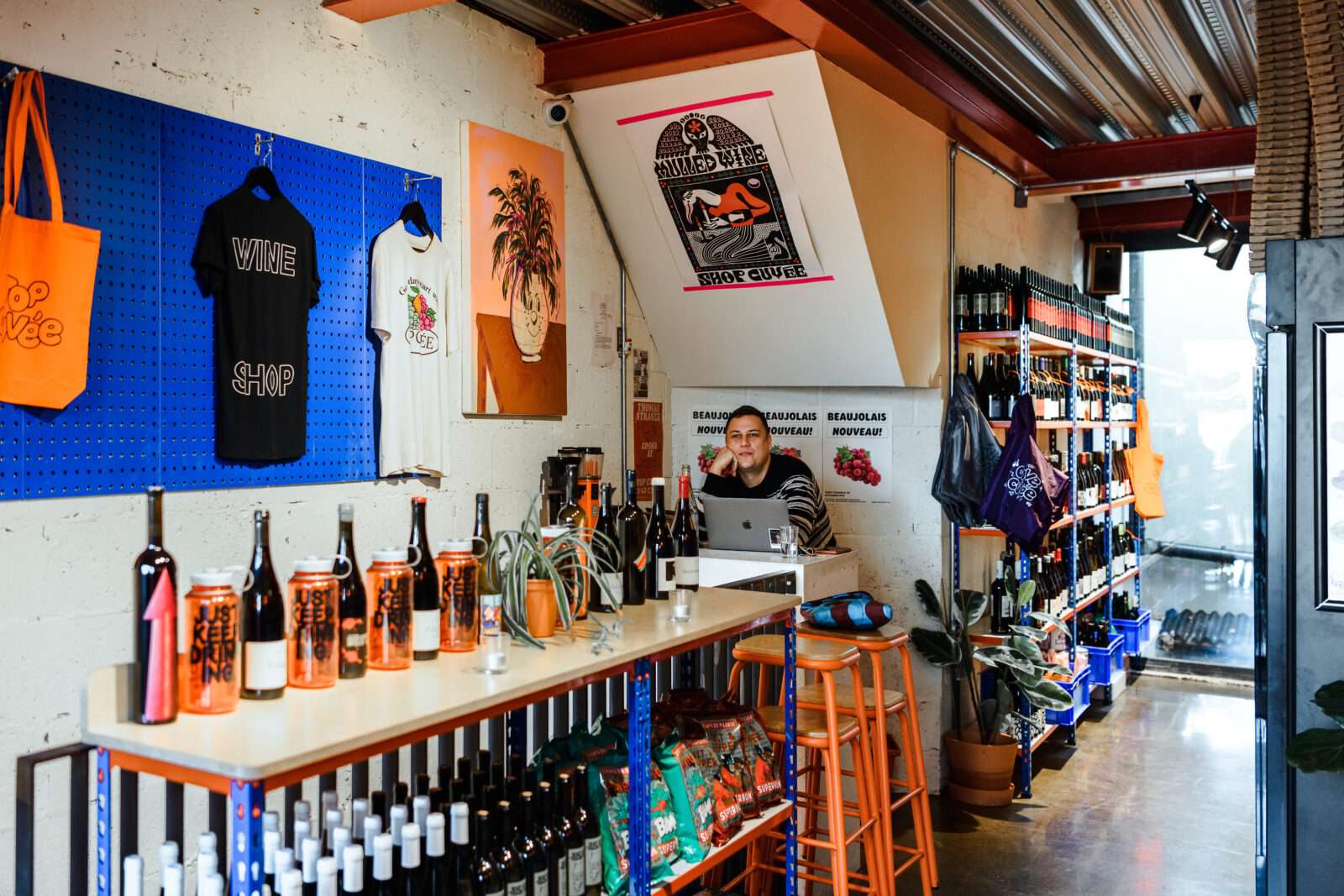
Brodie: “Now we’re much further down the line, it’s really easy to see our vision with the branding, whereas when we first launched it was questioned. Hopefully, now it’s clear we’re communicating our ideals about hospitality and the wine industry through a visual identity.
“It was always the long-term plan to have a strong, approachable and likable brand, but at the start, it was about being eye-catching. Sommeliers describe the best wine as the ‘top cuvee’, and it’s sometimes said in a really snooty way. But when you combine the definition with our cartoon branding, it feels fun and chill – and that follows through to our service. There’s no reason behind the orange colour except that it’s friendly. In the restaurant world, branding is very neutral and serious; orange was an instant point of difference.
“When developing the brand, I was looking at a lot of old French and Belgian cartoons. I have always been interested in graffiti and graphic design. People probably think I’m into fashion and streetwear – I’m not really, but I think the influences are the same: the music, club nights, street art. I’m obsessed with stickers, so we made our own and it’s just mind-blowing to see them on so many phones and laptops. Stickers are a product of influence.
“I used to read about wine and vegetables, but now I read a lot more about branding and marketing. It’s all about learning what it takes to make a long-term brand that’s going to live on beyond us.”
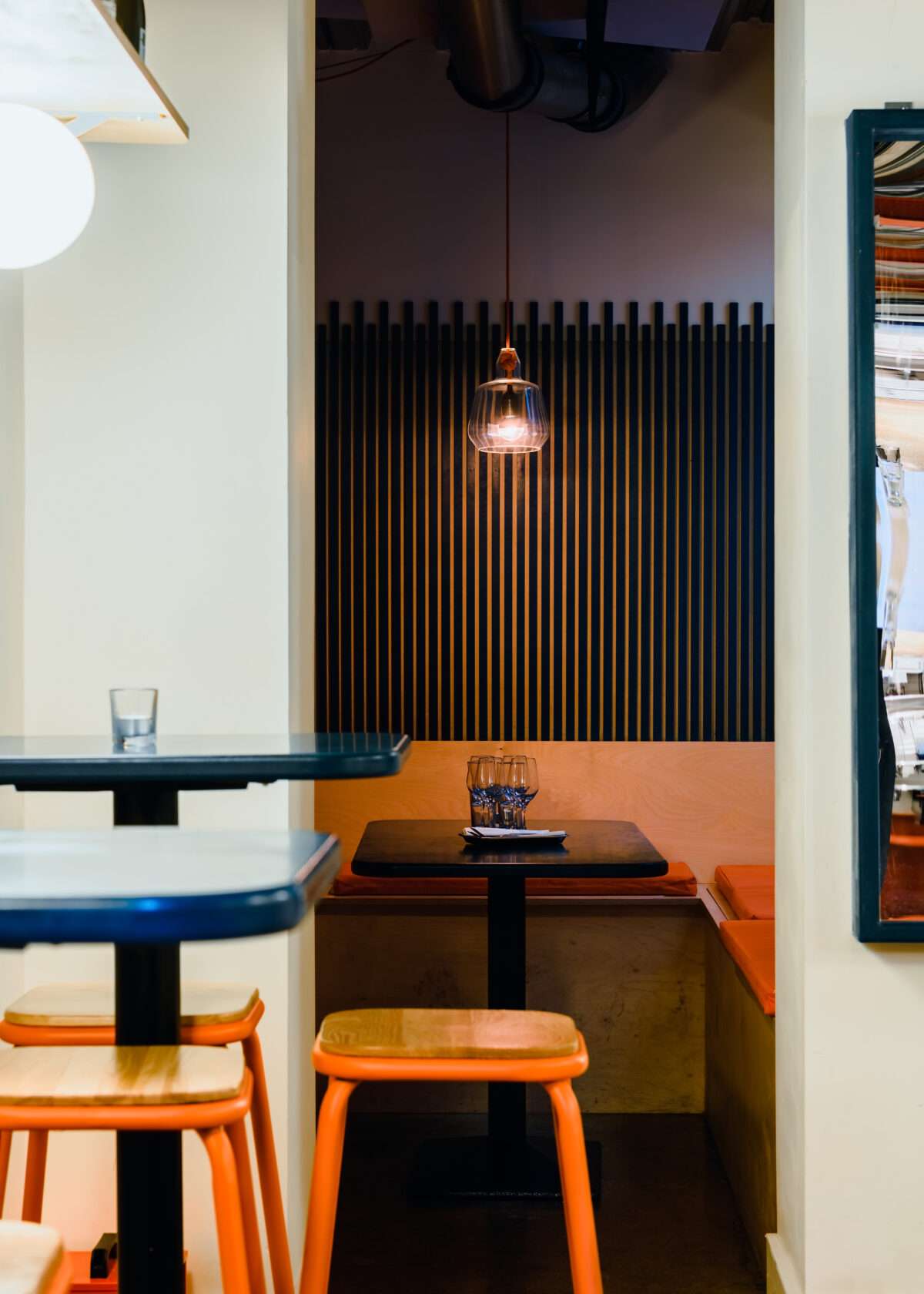
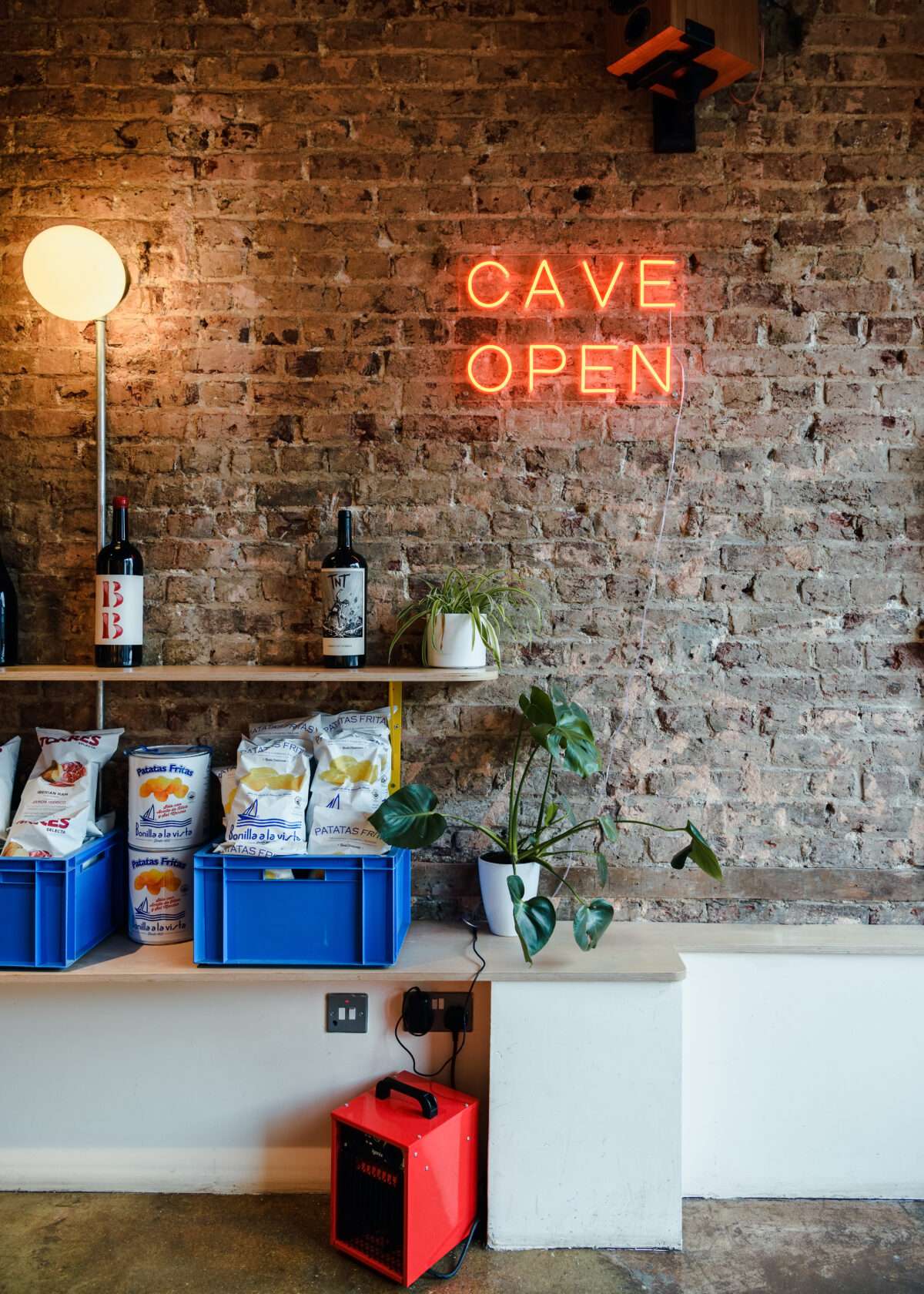
Max: “We’re always trying to figure out new ways of doing things. We have different customer groups, but they all have a common thread: they want to drink interesting wine and not be too serious about it. We make sure our customers receive the best they can get, but they’re not being told that, it’s just happening. They can just have a nice relaxing evening.”
Brodie: “I used to work in a very-high end Michelin-starred restaurant. It taught me everything I know about how to run a restaurant. What I really loved about it was that you had to be knowledgeable and try to blow people’s minds with the service. But it was quite stuffy. It’s not intentional, but I think restaurants like that can make people feel uncomfortable and intimidated. Then when you get handed a long wine list, it’s a whole other ball game! The thing that I tell all new members of the team is that wine bars don’t have to be an educational experience.”
Max: “We like to chat to our customers about wine: ‘Hey, what do you feel like drinking?’ We’ll give them a taster, or a beer if that’s their preference. There are countless restaurants in London that do great things. But often, they’re flexing, showing off new ingredients, different techniques and stuff like that – and that’s great, but when it comes to the food we stick to the classics. What do you want to drink with wine? Steak tartare, bread and cheese, oysters. Simple.”
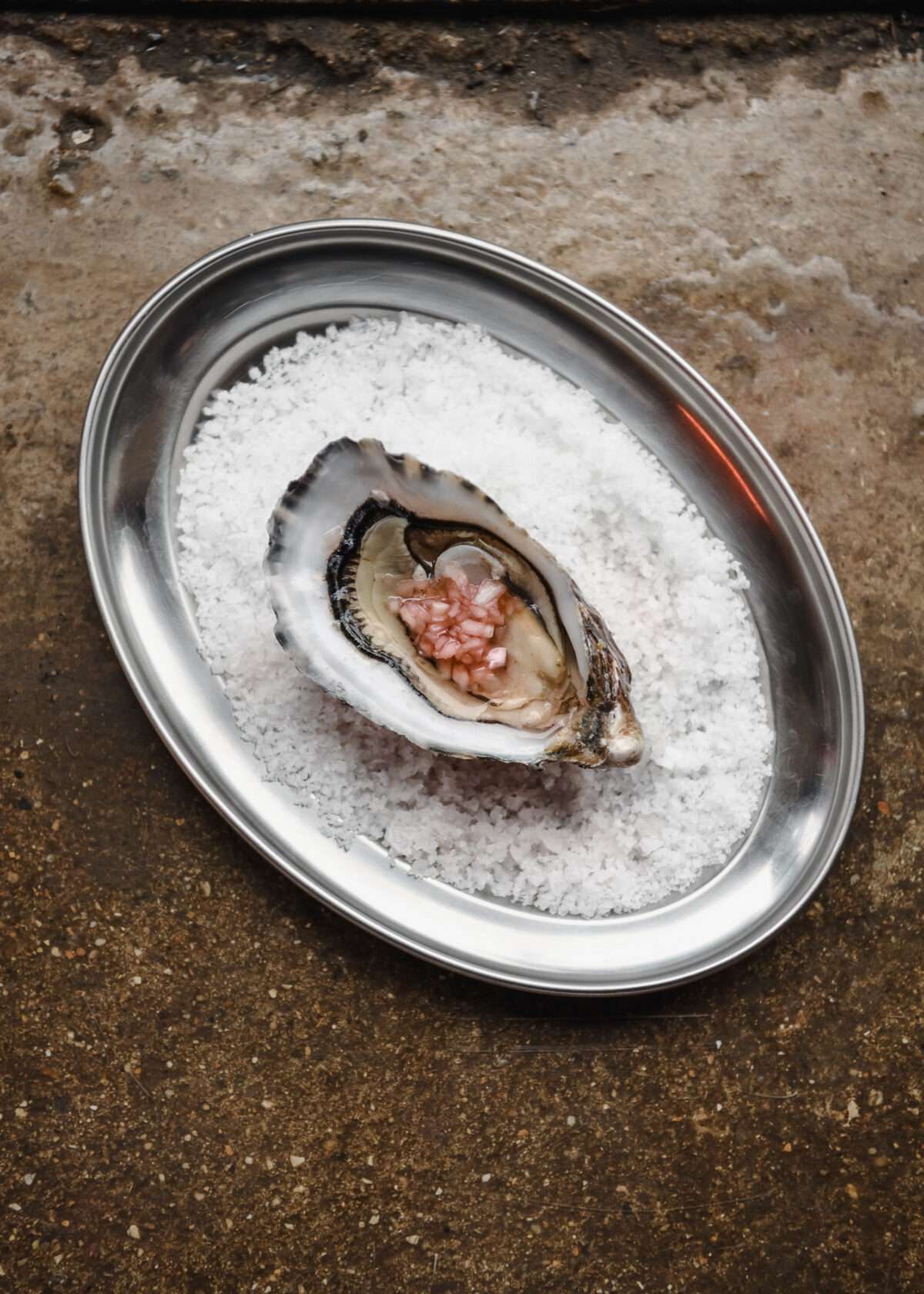
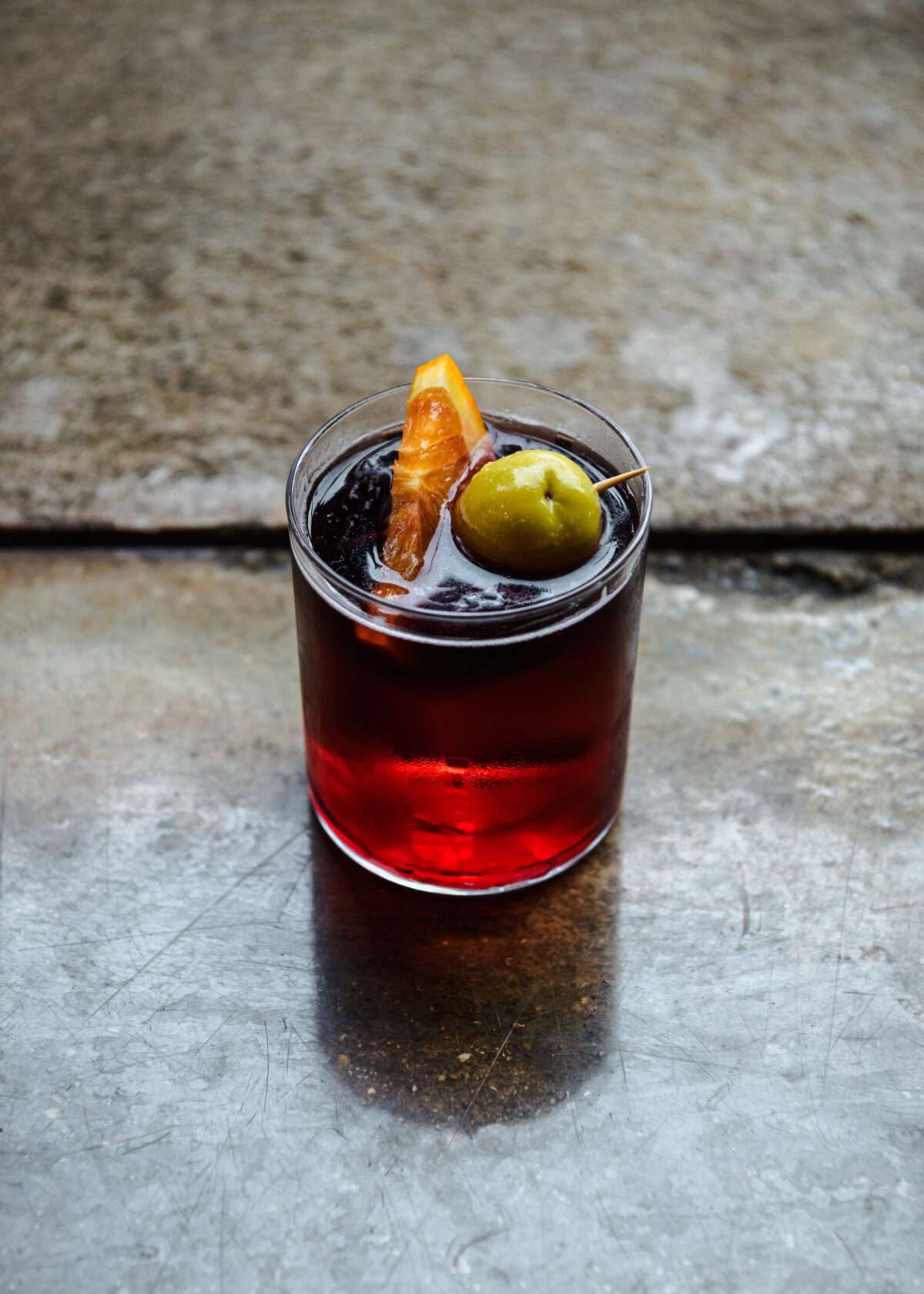
Max’s recipe for a blackcurrant vermouth and soda cocktail and oyster mignonette
Vermouth and soda
50ml sweet vermouth
100ml soda water
100ml crème de cassis
2g blackcurrant loose leaf tea
An orange slice and an olive to garnish
The evening before making the drink, infuse the créme de cassis with the tea overnight. Run it through a tea strainer the next day to create the blackcurrant cassis – it will last indefinitely. It’s not totally necessary to make this drink work but it adds a great dryness and depth.
Now, to make the cocktail, pour the vermouth and infused cassis into a highball and stir to combine. Add a big chunk of ice, or fill the glass to the brim with cubes. Top it with the soda and garnish with an orange slice and an olive.
Oyster mignonette
50ml rice vinegar
50ml white wine vinegar
100g minced shallots, diced as finely as possible
1g white pepper
1g sugar
3g salt
Mix everything except the shallot until the sugar and salt has dissolved. Stir the shallots through the vinaigrette to combine – this will take on a great pink colour if you do it a few hours in advance, or the day before and store it in the fridge.
Source some fresh oysters from your local fishmonger. We love Carlingford or Jersey oysters. Shuck them and serve alongside the mignonette with Tabasco and some lemon wedges.
